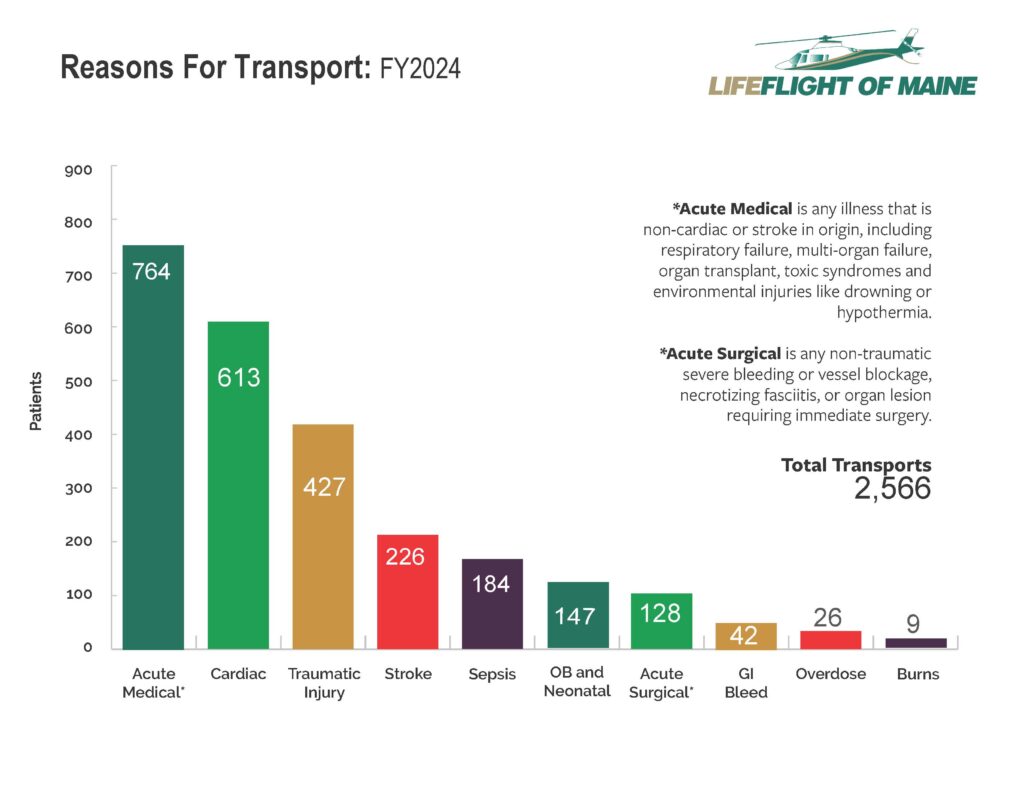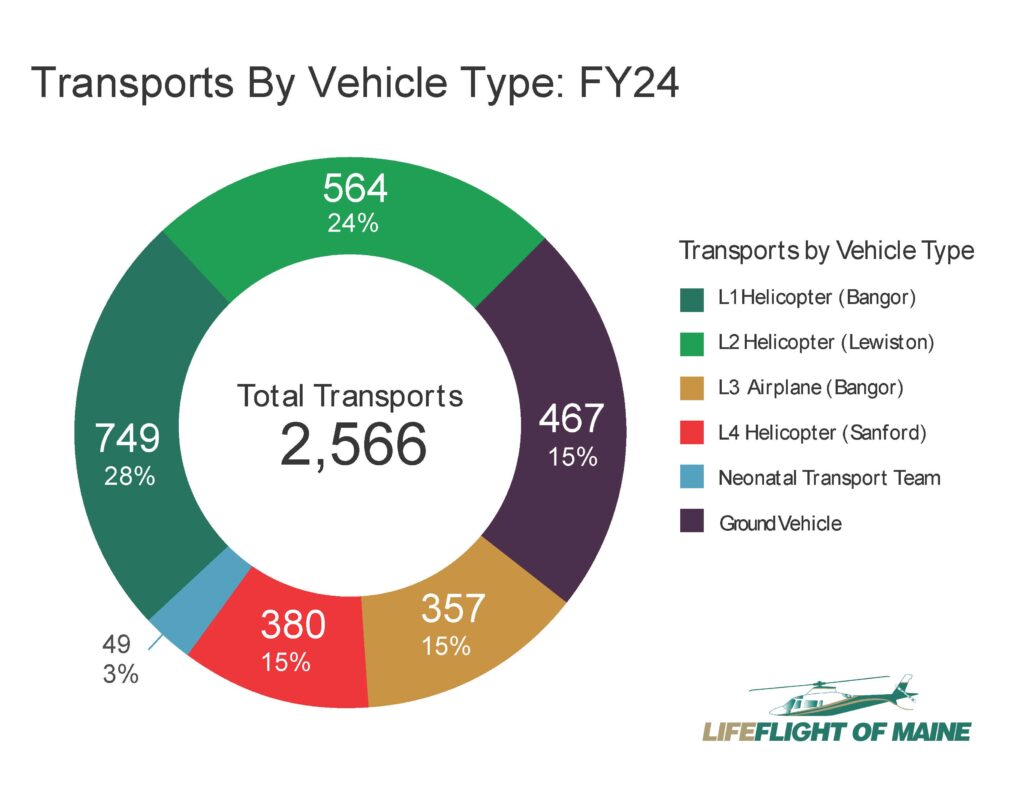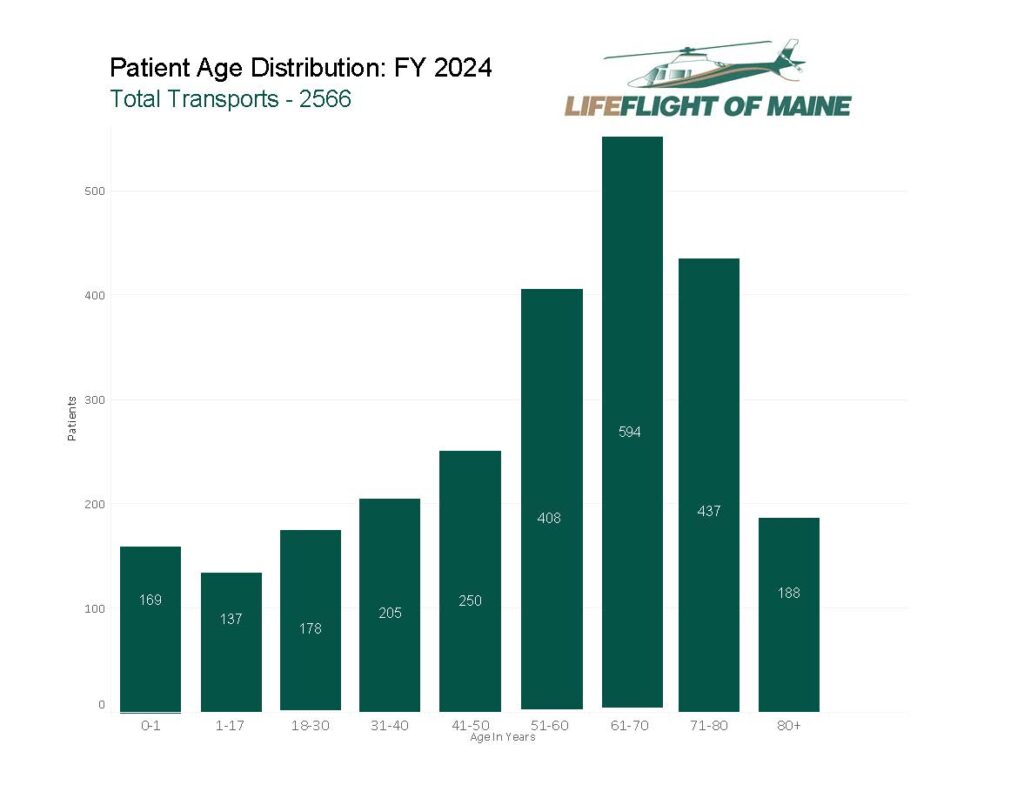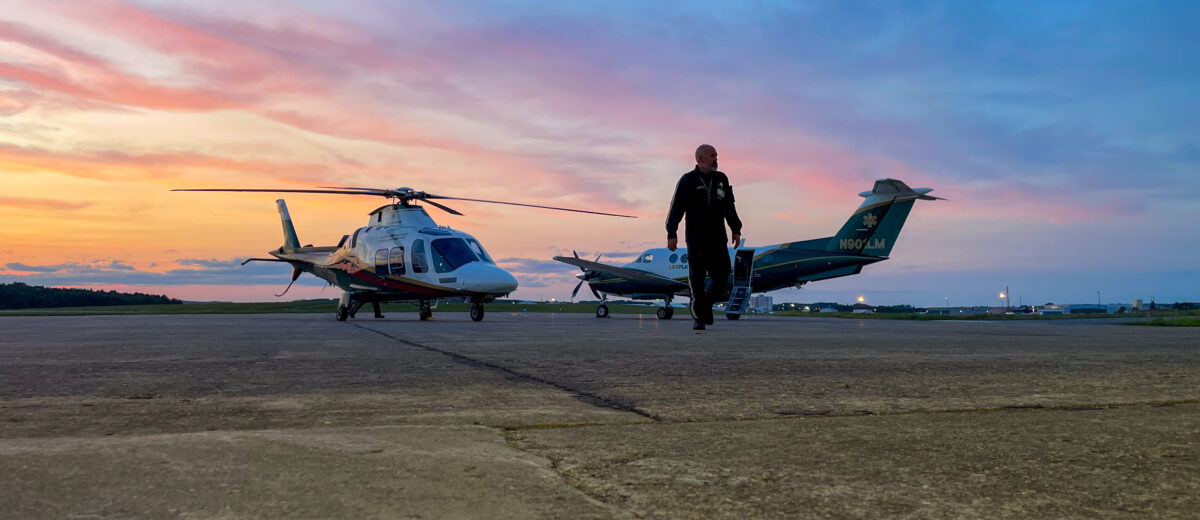Facts & Figures
Facts & Figures
- LifeFlight of Maine plays a unique and essential role in the “chain of survival” by caring for and transporting Maine’s most critically ill and injured patients. In fiscal year 2024 (July 2023-June 2024), LifeFlight transported 2,566 patients — averaging one patient every 3.5 hours.
- LifeFlight deploys medical teams from bases in Sanford, Lewiston, and Bangor, using five helicopters, a fixed-wing airplane, rapid response vehicles, and specialized ground ambulances. These teams care for Maine 24/7/365, partnering with local EMS, Fire/Rescue, and hospital providers.
- Approximately 92% of patients are transported from one hospital to another offering a higher level of care, while 8% are transported directly from the scene of an emergency — roadsides, woods, mountains, and islands.
- LifeFlight transports patients of all ages needing specialized care beyond what can be provided by local hospitals—including premature infants, cardiac and stroke patients, patients with complex traumatic injury, sepsis, burns, or with obstetric complications or needing an organ transplant.
- LifeFlight uses the strictest medical utilization criteria to make sure all flights are medically necessary.
- While most patients are transported to a major medical center in Maine, 12% of patients are taken to Boston and beyond for specialized care not available in the state.
- LifeFlight operates similarly to a hospital emergency department, caring for all patients regardless of their ability to pay. Patient fees cover operational expenses, but we rely on donors who make gifts to The LifeFlight Foundation to support the purchase of aircraft, medical equipment, aviation infrastructure enhancements and provide education and training for the LifeFlight crew and our partners across the state.





